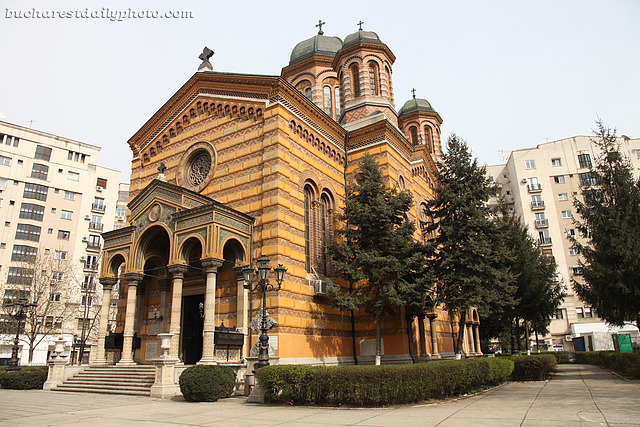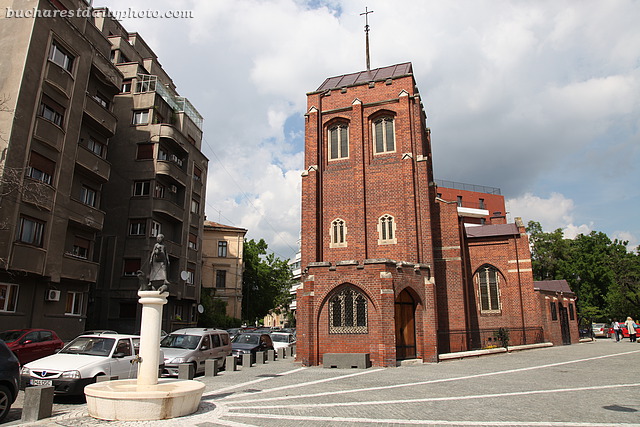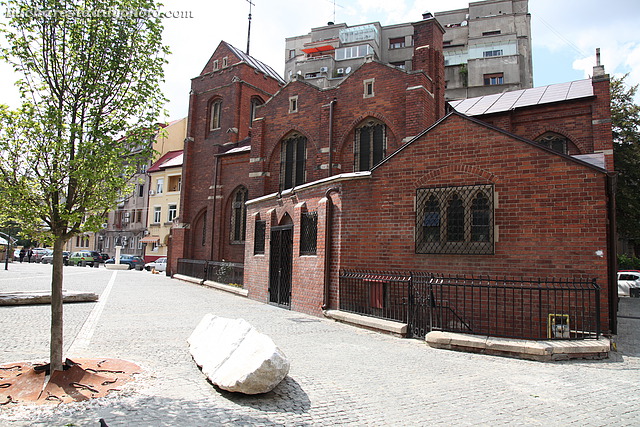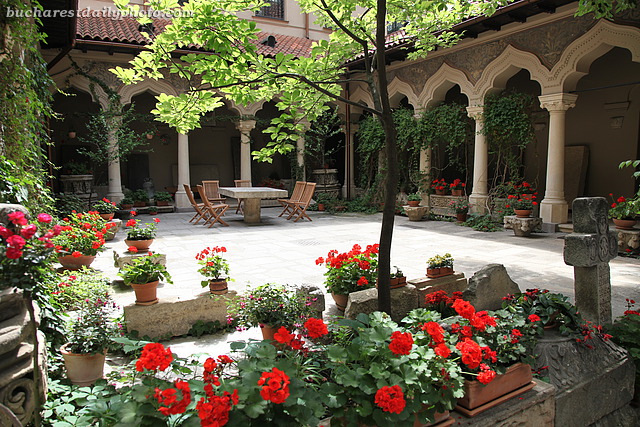Most of Bucharest’s old churches have a history full of drama: fires, earthquakes, demolitions, temporary closings. But even among these tumultuous histories, the Princess Bălașa Church (Biserica Domnița Bălașa in Romanian) must hold some kind of a record in terms of fighting natural disasters. The first church on this spot was a wooden one built in 1773-1774 by Princess Bălașa (Constantin Brâncoveanu‘s sixth daughter) and her husband Manolache Lambrino. This first church burned down and was replaced in 1751 by a stone structure built by Princess Bălașa after the death of her husband. Renovated in 1831, the second church didn’t last too long either being damaged during an earthquake in 1838. It was replaced by a third church built in 1838-1842 by Safta Brâncoveanu. At its turn, the third structure was damaged by floods and was replaced by a fourth one built between 1881-1885. This is the striped building that we see today, designed by architect Alexandru Orăscu in a Neo-Romanian, Neo-Byzantine style. The current church had to be repaired again after each of the two major 20C earthquakes (1940 and 1977). Princess Bălașa Church is one of the most popular places for weddings in Bucharest and if you come here on a Saturday or Sunday you are almost certain to see a wedding taking place. The church is located off the Union Square, facing the side of the Palace of Justice.
Today’s photographs show Bucharest’s Anglican Church of the Resurrection, located near Icoanei Park, at the intersection of three streets. Like many other churches in Bucharest, it has an interesting past. It was built in 1913-1914 on land given to the British Crown by the city of Bucharest. It was opened in 1920 and dedicated in 1922 by the Bishop of Gibraltar. In the early days the church was regularly attended by the Queen Marie of Romania, granddaughter of Queen Victoria, and it was due to her help that the building was completed. The church was closed during WWII from 1940 to Christmas Day 1944, a period when it was under the care of a church guardian and cleaner, also named Maria, who continued to work at the church until 1983 when at the age of 78 was forced to retire. She was later presented with the bronze cross of the Order of St. Augustine of Canterbury by the Archbishop of Canterbury. After the communists took power the church had no permanent chaplain, being served monthly by visiting priests. This situation lasted until 1966. The church’s official webpage describes the harsh conditions of the late 1980s when the church was under constant surveillance and how “the few Romanians who dared to step inside risked losing their job, their home, even their freedom”. These days the church offers English language services every Sunday. The building’s red brick facade is reminiscent of British architecture, and is the work of architect Victor Gh. Ştephănescu.
Late last November I’ve posted a photo of the Stavropoleos church courtyard with the mention that the place looks always beautiful and peaceful, no matter the season or the weather. To further back my words this is how the courtyard looks now at the beginning of summer.



